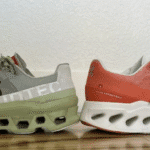In the world of PC building and hardware maintenance, the debate over thermal paste vs thermal pad is more relevant than ever in 2025. Both materials are designed to improve heat transfer between processors and heatsinks, but rapid advances in CPU and GPU performance have made choosing the right solution increasingly important.
While thermal paste is known for its superior conductivity, thermal pads offer convenience and reusability, two factors many builders now consider when upgrading their systems. In this article, we’ll explore the latest developments, key differences, and which option delivers the best results for today’s high-performance setups.
The Role of Thermal Interface Materials (TIMs)
Thermal Interface Materials (TIMs) play an important role in improving heat transfer between a heat-producing component such as a CPU, GPU, or power chip, and a heatsink or cooling device. Their main purpose is to fill tiny air gaps and surface imperfections between these two parts, since air is a poor conductor of heat.
TIMs improve heat transfer by replacing air gaps with a material that moves heat away from components more efficiently. This helps keep electronic devices cooler, improves their performance, prevents overheating, and extends their lifespan. TIMs ensure stable and efficient thermal management in all kinds of electronic systems.
Thermal Paste: High Performance Through Precision
Thermal paste is a material that helps transfer heat from a component, like a CPU or GPU, to its heatsink. It fills tiny air gaps between the component and the heatsink because air doesn’t carry heat well, helping heat flow faster and keeping the component cooler.
Types of Thermal Paste:
- Metal-Based Pastes: Contain fine metal particles in a silicone or ceramic base. They conduct heat very well but can conduct electricity, so spills can cause short circuits.
- Ceramic-Based Pastes: Made with materials such as aluminum oxide or boron nitride. They are electrically safe but usually have slightly lower thermal conductivity.
- Liquid Metal Pastes: Made from metal alloys like Galinstan, offering extremely high thermal conductivity. However, they conduct electricity and can corrode aluminum, so they must be handled carefully.
How It Works
Thermal paste fills the tiny imperfections and air gaps between the heatsink and the component’s surface. Since air doesn’t transfer heat well, the paste replaces it with a material that conducts heat much better. This ensures efficient heat flow from the processor to the heatsink, improving cooling and preventing overheating.
Advantages
- Excellent Heat Transfer: High-quality pastes provide strong thermal conductivity for efficient cooling.
- Ideal for High-Performance Systems: Essential for gaming PCs, overclocked setups, and servers where components generate a lot of heat.
- Improves System Stability: Helps maintain safe operating temperatures, preventing performance drops or hardware damage from overheating.
Drawbacks
- Can Dry Out Over Time: Thermal paste can lose effectiveness and require replacement after long-term use.
- Requires Careful Application: Applying too much or too little paste can lower cooling efficiency.
- Not Reusable: Once removed, the paste must be cleaned off and reapplied.
- Risk of Short Circuits: Metal-based and liquid metal pastes can be electrically conductive if spilled on other components.
Thermal Pads: Convenience Meets Consistency
Thermal pads are pre-formed sheets that help transfer heat from components to heat sinks. They are usually made of a polymer base with thermally conductive fillers.
Common types of Thermal Pads:
- Silicone-Based Pads: Flexible, electrically insulating, and easy to use.
- Graphite-Based Pads: High thermal conductivity, ideal for efficient heat dissipation.
- Phase-Change Pads: Turn from solid to a soft, paste-like state around 55–60°C to fill tiny gaps and improve thermal contact.
How They Work
Thermal pads work by compressing under pressure to fill microscopic gaps between a component and its heat sink. This reduces resistance to heat flow, making them especially useful for uneven surfaces.
Advantages
- Easy to Install: No mixing or curing required, mess-free.
- Reusable: Some pads can be removed and reused if not damaged.
- Clean and Reliable: Solid form prevents spills and maintains consistent performance.
- Electrical Insulation: Many pads protect components by preventing short circuits.
Drawbacks
- Lower Thermal Conductivity: Not as efficient as thermal paste for high-performance cooling.
- Less Effective Under Extreme Heat: Standard pads may struggle at very high temperatures, though phase-change pads perform better.
- Thickness Sensitivity: Too thick pads may not compress properly; too thin pads can leave gaps, reducing heat transfer.
Thermal pads are a convenient, reliable solution for managing heat in many electronics. They’re easy to use, reusable, and electrically safe, making them ideal for consumer and industrial devices. However, for maximum heat transfer in high-performance applications, thermal paste is generally the better choice. Selecting the right thermal interface material depends on your device’s thermal needs, ease of installation, and operating conditions.
2025 Developments and Innovations
In 2025, thermal interface materials (TIMs) will have become more advanced, focusing on better performance, easier use, and eco-friendly designs.
- Improved Thermal Pastes: New pastes last longer, are non-conductive, and use advanced materials like graphene and nano-diamonds for faster heat transfer. For example, some high-end pastes can reach 16 W/m·K, providing excellent cooling for powerful CPUs and GPUs.
- Next-Generation Thermal Pads: Modern pads use graphite and hybrid materials that improve heat transfer and flexibility. Some even have anisotropic conductivity, which directs heat more efficiently for high-performance systems.
- Sustainable and Maintenance-Free Solutions: Companies are developing eco-friendly, recyclable TIMs and maintenance-free options like carbon nanotube pads that eliminate the need for traditional paste.
- Better Testing and Data: Tests show that new products handle stress better, and online databases make it easy for users to compare how products perform in real life.
TIM technology in 2025 is more efficient, reliable, and sustainable. Helping keep modern electronic devices cooler, safer, and longer-lasting.
Performance Comparison: Thermal Paste vs. Thermal Pad
- Thermal Paste:
Thermal paste offers better overall performance for heat transfer. It fills tiny air gaps between the CPU or GPU and the heatsink, allowing heat to move efficiently. This makes it ideal for high-performance and high-temperature components like gaming CPUs, GPUs, and workstations. In stress tests, thermal paste can keep temperatures several degrees lower than thermal pads, improving stability and performance during heavy use.
- Thermal Pad:
Thermal pads are less efficient at transferring heat because they cannot fill microscopic gaps as well as paste. However, they work well for low- to medium-heat components such as VRMs, RAM, or small chips on laptops. Pads are also safer and easier to apply, offering good thermal performance where extreme cooling is not required.
Use thermal paste for maximum cooling in powerful systems, and thermal pads for simpler, low-heat applications where convenience and safety matter more than top performance.
Which Should You Choose in 2025?
The right thermal interface material depends on your system, desired performance, and how much maintenance you’re willing to handle.
- Gamers and Performance Enthusiasts: Thermal Paste
Why it’s ideal:
- Superior Cooling: Metal- or liquid-metal pastes transfer heat extremely well, perfect for overclocked CPUs and GPUs.
- Industry Standard: Compatible with most cooling solutions and hardware.
Things to keep in mind:
- Careful Application: Must be applied evenly to avoid air gaps.
- Maintenance Needed: Paste can degrade and usually needs reapplication every 1–3 years.
- Casual Users and Upgraders: Thermal Pads
Why it’s ideal:
- Easy to Use: Thermal pads can be applied by simply peeling and sticking them in place, with no special skills required.
- Long-Lasting: High-quality pads can last 3–10 years with minimal upkeep.
Considerations:
- Lower Heat Transfer: Pads don’t cool as efficiently as premium pastes.
- Not for Extreme Loads: Less effective for high-performance systems under heavy heat.











